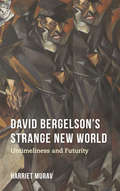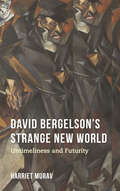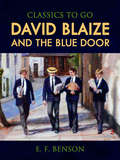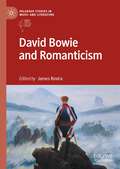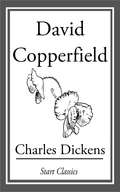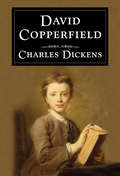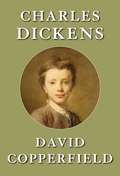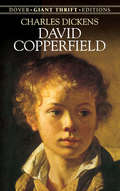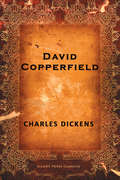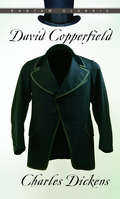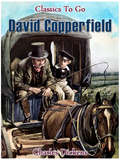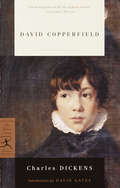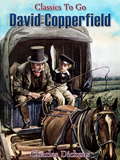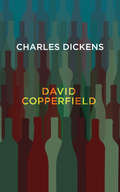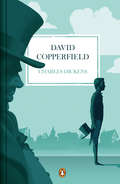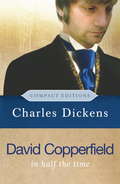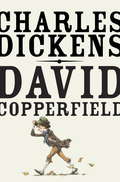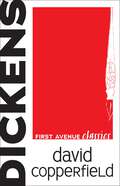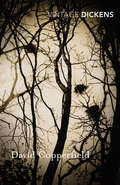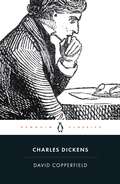- Table View
- List View
David Bergelson: From Modernism to Socialist Realism. Proceedings of the 6th Mendel Friedman Conference
by Joseph Sherman"Among the finest prose stylists in Yiddish literature, David Bergelson (1884-1952) was caught up in many of the twentieth century's most defining events. In 1909 he emerged as a pioneer of modernist prose, observing the slow decay of the Tsarist empire. In 1917 he welcomed the Revolution, but the bloodshed of the ensuing Civil War and the dogmatism of the Bolsheviks drove him to emigration. For more than a decade (1921-1934), he lived in Weimar Germany, travelling extensively in Europe and the United States. Shocked by the Wall Street Crash of 1929, disheartened by the decline of Yiddish culture in the West, and inspired by Soviet promises to create a Jewish republic, Bergelson became a Communist sympathiser and moved towards socialist realism. Returning to the Soviet Union after Hitler's rise to power, Bergelson flourished in a state-sponsored cultural environment in which his work was widely read both in Yiddish and in Russian translation. After Hitler's invasion of the Soviet Union in 1941, Bergelson became a prominent member of the Jewish Anti-Fascist Committee, writing extensively about the Holocaust. In the paranoia of the Cold War years, the Stalinist regime accused him of anti-Soviet activities and, after a secret military trial he was executed on 12 August 1952, his 68th birthday. For years, critics have argued that Bergelson produced his best work before the Revolution, and afterwards largely wrote Communist propaganda. David Bergelson: From Modernism to Socialist Realism challenges this view by examining Bergelson's entire oeuvre. The book argues that Bergelson continually reinvented himself as a writer, experimenting with style and narrative technique even under the most severe restrictions of Party dogma. With contributions from an international team of Bergelson experts, the volume offers a full-length biography, the first complete bibliography of Bergelson's work, translations of two of his most influential programmatic articles, and a range of essays dealing with all periods of the writer's life. With the contributions: Joseph Sherman- David Bergelson (1884-1952): A Biography Lev Bergelson- Memories of My Father: The Early Years (1918-1934) Daniela Mantovan- Language and Style in Nokh alemen (1913): Bergelson's Debt to Flaubert Kerstin Hoge- For Children and Adults Alike: Reading Bergelson's 'Children's Stories' (1914-1919) as Narratives of Identity Formation Seth L. Wolitz- Yoysef Shor (1922): Between Two Worlds Sasha Senderovich- In Search of Readership: Bergelson Among the Refugees (1928) Mikhail Krutikov- Narrating the Revolution: From 'Tsugvintn' (1922) to Mides-hadin (1929) Ellen Kellman- Uneasy Patronage: Bergelson's Years at Forverts (1922-1926) Gennady Estraikh- David Bergelson in and on America (1929-1949) Ber Boris Kotlerman- 'Why I am in Favour of Birobidzhan': Bergelson's Fateful Decision (1932) Harriet Murav- Memory and Monument in Baym Dnyepr (1932-1940) David Shneer- From Mourning to Vengeance: Bergelson's Holocaust Journalism (1941-1945) Jeffrey Veidlinger- 'Du lebst, mayn folk': Bergelson's Play Prints Ruveni in Historical Context (1944-1947) Joseph Sherman- 'Jewish Nationalism' in Bergelson's Last Book (1947) Roberta Saltzman- A Bibliography of David Bergelson's Work in Yiddish and English David Bergelson- Appendix A. Belles-lettres and the Social Order (1919) David Bergelson- Appendix B. Three Centres (Characteristics) (1926)"
David Bergelson's Strange New World: Untimeliness and Futurity (Jews in Eastern Europe)
by Harriet MuravDavid Bergelson (1884–1952) emerged as a major literary figure who wrote in Yiddish before WWI. He was one of the founders of the Kiev Kultur-Lige and his work was at the center of the Yiddish-speaking world of the time. He was well known for creating characters who often felt the painful after-effects of the past and the clumsiness of bodies stumbling through the actions of daily life as their familiar worlds crumbled around them. In this contemporary assessment of Bergelson and his fiction, Harriet Murav focuses on untimeliness, anachronism, and warped temporality as an emotional, sensory, existential, and historical background to Bergleson’s work and world. Murav grapples with the great modern theorists of time and memory, especially Henri Bergson, Sigmund Freud, and Walter Benjamin, to present Bergelson as an integral part of the philosophical and artistic experiments, political and technological changes, and cultural context of Russian and Yiddish modernism that marked his age. As a comparative and interdisciplinary study of Yiddish literature and Jewish culture, this work adds a new, ethnic dimension to understandings of the turbulent birth of modernism.
David Bergelson's Strange New World: Untimeliness and Futurity (Jews In Eastern Europe Ser.)
by Harriet MuravA contemporary evaluation of Bergelson and his works, examining Yiddish literature, Jewish culture, and modernism.David Bergelson (1884–1952) emerged as a major literary figure who wrote in Yiddish before WWI. He was one of the founders of the Kiev Kultur-Lige, and his work was at the center of the Yiddish-speaking world of the time. He was well known for creating characters who often felt the painful after-effects of the past and the clumsiness of bodies stumbling through the actions of daily life as their familiar worlds crumbled around them. In this contemporary assessment of Bergelson and his fiction, Harriet Murav focuses on untimeliness, anachronism, and warped temporality as an emotional, sensory, existential, and historical background to Bergleson’s work and world. Murav grapples with the great modern theorists of time and memory, especially Henri Bergson, Sigmund Freud, and Walter Benjamin, to present Bergelson as an integral part of the philosophical and artistic experiments, political and technological changes, and cultural context of Russian and Yiddish modernism that marked his age. As a comparative and interdisciplinary study of Yiddish literature and Jewish culture, this work adds a new, ethnic dimension to understandings of the turbulent birth of modernism.“Harriet Murav treats Bergelson with the care and sincerity that literary critics have shown other important writers. This is a masterpiece of literary scholarship that will be sure to transform not only how people read Bergelson and who chooses to read Bergelson, but how readers engage with the entire concept of modernism itself.” —David Shneer, author of Yiddish and the Creation of Soviet Jewish Culture: 1918-1930
David Blaize and the Blue Door (Classics To Go)
by E. F. BensonSet in England before World War I, the novel describes David's years at prep school and public school, his studies, sports and friendships, and finally, his brush with death when he stops a runaway horse. (Wikipedia)
David Bowie and Romanticism (Palgrave Studies in Music and Literature)
by James RoviraDavid Bowie and Romanticism evaluates Bowie’s music, film, drama, and personae alongside eighteenth- and nineteenth-century poets, novelists, and artists. These chapters expand our understanding of both the literature studied as well as Bowie’s music, exploring the boundaries of reason and imagination, and of identity, gender, and genre. This collection uses the conceptual apparata and historical insights provided by the study of Romanticism to provide insight into identity formation, drawing from Romantic theories of self to understand Bowie’s oeuvre and periods of his career. The chapters discuss key themes in Bowie’s work and analyze what Bowie has to teach us about Romantic art and literature as well.
David Copperfield
by Charles DickensThe novel traces the life of David Copperfield from the time of his birth to his mature manhood, when he is married and familiar with the vicissitudes of life.
David Copperfield
by Charles DickensBased on the author's own tumultuous journey from boy to man, this epic traces young David's progress from his mother's sheltering arms to the miseries of boarding-school and sweatshop and the rewards of friendship, romance, and self-discovery in his vocation as a writer. A cherished favorite with generations of readers.
David Copperfield
by Charles DickensDavid Copperfield is the eighth novel by Charles Dickens. Many elements of the novel follow events in Dickens' own life, and it is often considered as his veiled autobiography. The story follows the life of David Copperfield from childhood to maturity. David was born in Blunderstone, Suffolk, England, six months after the death of his father. David spends his early years in relative happiness with his loving, childish mother and their kindly housekeeper, Peggotty. When he is seven years old his mother marries Edward Murdstone. During the marriage, partly to get him out of the way and partly because he strongly objects to the whole proceeding, David is sent to lodge with Peggotty's family in Yarmouth. Her brother, fisherman Mr Peggotty, lives in a house built in an upturned boat on the beach, with his adopted relatives Emily and Ham, and an elderly widow, Mrs Gummidge. "Little Em'ly" is somewhat spoilt by her fond foster father, and David is in love with her. On his return, David is given good reason to dislike his stepfather and has similar feelings for Murdstone's sister Jane, who moves into the house soon afterwards. Between them they tyrannise his poor mother, making her and David's lives miserable, and when, in consequence, David falls behind in his studies, Murdstone attempts to thrash him – partly to further pain his mother. Read the book further to discover the story.
David Copperfield
by Charles DickensAs in so many of Dickens' tales, the powerful abuse the weak and exploitation rules. David Copperfield is the semi-autobiographical tale of a young man's journey from an impoverished childhood to the discovery of his vocation as a novelist.Remaining one of the best-known works of the Victorian era, Dickens names David Copperfield as his "favourite child."
David Copperfield
by Charles DickensAs in so many of Dickens' tales, the powerful abuse the weak and exploitation rules. David Copperfield is the semi-autobiographical tale of a young man's journey from an impoverished childhood to the discovery of his vocation as a novelist.Remaining one of the best-known works of the Victorian era, Dickens names David Copperfield as his "favourite child."
David Copperfield
by Charles Dickens"Like many fond parents, I have in my heart of hearts a favourite child," confessed Charles Dickens in the preface of this novel, "and his name is David Copperfield." Millions of readers have taken young David into their hearts as well, weeping over his misfortunes and exulting in his triumphs. Dickens' seventh novel, David Copperfield, appeared in 1850, by which time he was a British national institution. Based on the author's own tumultuous journey from boy to man, this epic traces David's progress from his mother's sheltering arms to the miseries of boarding-school and sweatshop, and the rewards of friendship, romance, and self-discovery in his vocation as a writer.In addition to its compelling narrative, the great appeal of David Copperfield lies in its memorable cast of characters. From Mr. Murdstone, the brutal stepfather, to the scheming clerk Uriah Heep, the novel is peopled by vividly observed characters. Nursemaid Peggoty, bursting with vitality, leaves a trail of flying buttons in her wake. Grandiloquent Mr. Micawber is ever-confident that something will turn up to save his large brood from penury. Kind by wildly eccentric, Aunt Betsey Trotwood accepts counsel from the wise fool, Mr. Dick, and provides a heated reception for trespassing donkeys. Dickens' genius was comic, and David Copperfield reflects his view of existence as a mixture of laughter and tears — with laughter uppermost.
David Copperfield: Roman Anglais. Tome 2
by Charles DickensThe eighth novel from one of the English language's most important writers, Charles Dickens' David Copperfield is considered a masterpiece. Originally published in 1850, the book tells the titular character's life story as he escapes an unhappy childhood with his stepfather and strikes out on his own, encountering a memorable cast of characters. Through his life, David encounters comedy and tragedy, kindness and cruelty and grows as a character. There are many details in the book drawn from Dickens' own life, and he referred to the character of Copperfield as his "favourite child".
David Copperfield
by Charles Dickens" Like so many fond parents I have in my heart of hearts a favourite child," wrote Charles Dickens. "And his name is David Copperfield." Of all of Dickens's novels, David Copperfield most closely reflects the events of his own life. The story of an abandoned waif who discovers life and love in an indifferent world, this classic tale of childhood is populated with a cast of eccentrics, innocents, and villains who number among the author's greatest creations. "David Copperfield is filled with characters of the most astonishing variety, vividness, and originality," noted Somerset Maugham. "They are not realistic and yet they abound with life. There never were such people as the Micawbers, Pegotty and Barkis, Traddles, Betsey Trotwood and Mr. Dick, Uriah Heep and his mother. They are fantastic inventions of Dickens's exultant imagination, but they have so much vigor, they are so consistent, they are presented with so much conviction, that you believe in them. They are extravagant, but not unreal, and when you have once to know them you can never quite forget them." T. S. Eliot agreed: "Dickens excelled in character; in the creation of characters of greater intensity than human beings." And Virginia Woolf concluded: "In David Copperfield, though char-acters swarm and life flows into every creek and cranny, some common feelings--youth, gaiety, hope--envelops the tumult, brings the scattered parts together, and invests the most perfect of all the Dickens novels with an atmosphere of beauty." The Modern Library has played a significant role in American cultural life for the better part of a century. The series was founded in 1917 by the publishers Boni and Liveright and eight years later acquired by Bennett Cerf and Donald Klopfer. It provided the foun-dation for their next publishing venture, Random House. The Modern Library has been a staple of the American book trade, providing readers with affordable hardbound editions of important works of literature and thought. For the Modern Library's seventy-fifth anniversary, Random House redesigned the series, restoring as its emblem the running torchbearer created by Lucian Bernhard in 1925 and refurbishing jackets, bindings, and type, as well as inaugurating a new program of selecting titles. The Modern Library continues to provide the world's best books, at the best prices.From the Hardcover edition.
David Copperfield: Roman Anglais. Tome 2 (Classics To Go)
by Charles DickensThe story traces the life of David Copperfield from childhood to maturity. David was born in Blunderstone, Suffolk, England, in 1820, six months after the death of his father. David spends his early years with his mother and their housekeeper, Peggotty. When he is seven years old, his mother re-marries Edward Murdstone. David is given good reason to dislike his stepfather and has similar feelings for Murdstone's sister Jane, who moves into the house soon afterwards. Murdstone attempts to thrash David for falling behind in his studies. David bites him and soon afterwards is sent away to a boarding school, Salem House, with a ruthless headmaster, Mr. Creakle. There he befriends James Steerforth and Tommy Traddles… (Excerpt from Wikipedia)
David Copperfield
by Charles DickensI do not find it easy to get sufficiently far away from this Book, in the first sensations of having finished it, to refer to it with the composure which this formal heading would seem to require. My interest in it, is so recent and strong; and my mind is so divided between pleasure and regret - pleasure in the achievement of a long design, regret in the separation from many companions - that I am in danger of wearying the reader whom I love, with personal confidences, and private emotions.
David Copperfield: Roman Anglais. Tome 2 (Classics To Go)
by Charles DickensDer Roman erzählt die Lebensgeschichte von David Copperfield, hinter dem sich der Autor selbst in verfremdeter Form verbirgt. Man erfährt von David Copperfields Werdegang und langsamem Erwachsenwerden. Die Erzählung lebt von den zahlreichen (berühmt gewordenen) Figuren, die seinen Weg kreuzen, ihn einen Teil seines Lebens begleiten, verschwinden und wieder auftauchen. Darunter sein Kindermädchen Peggotty, ihre Familie, die mit ihnen lebende kleine Waise Emily, die David verzaubert; seine enge Vertraute Agnes Wickfield, ein idealisiertes, engelsgleiches Wesen; und sein Schulfreund Steerforth, für den Emily, von falschen Versprechen geblendet, später ihren Verlobten verlässt, um mit ihm eine Affäre einzugehen. Genau dieses Ereignis löst auch die größte Tragödie des Romans aus. Sie durchzieht - wie vieles andere - das gesamte Werk bis an sein teilweise dramatisches Ende. (Auszug aus Wikipedia)
David Copperfield: Roman Anglais. Tome 2
by Charles Dickens“The most perfect of all the Dickens novels.” –Virginia WoolfWhen David Copperfield escapes from the cruelty of his childhood home, he embarks on a journey to adulthood which will lead him through comedy and tragedy, love and heartbreak and friendship and betrayal. Over the course of his adventure, David meets an array of eccentric characters and learns hard lessons about the world before he finally discovers true happiness.Penguin Random House Canada is proud to bring you classic works of literature in e-book form, with the highest quality production values. Find more today and rediscover books you never knew you loved.
David Copperfield
by Charles DickensBook Description David Copperfield is the story of a young man's adventures on his journey from an unhappy and impoverished childhood to the discovery of his vocation as a successful novelist.
David Copperfield: Roman Anglais. Tome 2
by Charles DickensEdición conmemorativa de la gran novela autobiográfica de Charles Dickens. David Copperfield, una historia llena de épica y exuberancia, es una de las obras más importantes de Charles Dickens y uno de los libros más célebres de la literatura universal. Cuenta la historia personal de David Copperfied y de los villanos, salvadores y excéntricos que se cruzan por su camino, personajes como Mr. Murdstone, el valiente Peggotty, la formidable Betsey Trotwood, el miserable Micawber y la odiosa Uriah Heep. Dickens solía decir que esta era su obra más querida, en parte por estar inspirada en su propia experiencia, pero además la obra rebosa de vida, así como de fabulosos momentos tragicómicos. Esta edición especial, publicada cuando se cumplen ciento cincuenta años de la muerte del autor, no puede faltar en ninguna biblioteca personal con vocación de permanencia. Sobre la obra y el autor:«La mejor obra del mejor novelista inglés.»Lev Toltói «David Copperfield le dio a Dickens la oportunidad de escribir sobre su propia vida y explorar la naturaleza humana individual en lugar de la sociedad en su conjunto.»Harold Bloom «Me atrevo a arriesgar la afirmación de que cuantos más años pasen, y se haga un cribado mayor, Dickens dominará toda la Inglaterra del siglo XIX; él solo ocupará el pináculo.»G. K. Chesterton
David Copperfield
by Charles DickensCompact editions - David Copperfield in half the time.<P><P> The eighth novel from one of the English language's most important writers, Charles Dickens' David Copperfield is considered a masterpiece.<P>Originally published in 1850, the book tells the titular character's life story as he escapes an unhappy childhood with his stepfather and strikes out on his own, encountering a memorable cast of characters. Through his life, David encounters comedy and tragedy, kindness and cruelty and grows as a character. <P>There are many details in the book drawn from Dickens' own life, and he referred to the character of Copperfield as his "favourite child".
David Copperfield
by Charles DickensCompact editions - David Copperfield in half the time.David Copperfield's happy childhood is abruptly ended by his mother's remarriage to Mr Murdstone. After enduring the misery of Salem House Academy and a life of drudgery in his step father's business, he runs away to his eccentric aunt, Betsey Trotwood, in Dover, and transforms his life a second time - finding friendship with the ever optimistic Mr Micawber and falling in love with the adorable but spoilt Dora. But David has to face tragedy, and outface the scheming Uriah Heep before he finds ultimate happiness.
David Copperfield
by Charles Dickens" Like so many fond parents I have in my heart of hearts a favourite child," wrote Charles Dickens. "And his name is David Copperfield." Of all of Dickens's novels, David Copperfield most closely reflects the events of his own life. The story of an abandoned waif who discovers life and love in an indifferent world, this classic tale of childhood is populated with a cast of eccentrics, innocents, and villains who number among the author's greatest creations. "David Copperfield is filled with characters of the most astonishing variety, vividness, and originality," noted Somerset Maugham. "They are not realistic and yet they abound with life. There never were such people as the Micawbers, Pegotty and Barkis, Traddles, Betsey Trotwood and Mr. Dick, Uriah Heep and his mother. They are fantastic inventions of Dickens's exultant imagination, but they have so much vigor, they are so consistent, they are presented with so much conviction, that you believe in them. They are extravagant, but not unreal, and when you have once to know them you can never quite forget them." T. S. Eliot agreed: "Dickens excelled in character; in the creation of characters of greater intensity than human beings." And Virginia Woolf concluded: "In David Copperfield, though char-acters swarm and life flows into every creek and cranny, some common feelings--youth, gaiety, hope--envelops the tumult, brings the scattered parts together, and invests the most perfect of all the Dickens novels with an atmosphere of beauty." The Modern Library has played a significant role in American cultural life for the better part of a century. The series was founded in 1917 by the publishers Boni and Liveright and eight years later acquired by Bennett Cerf and Donald Klopfer. It provided the foun-dation for their next publishing venture, Random House. The Modern Library has been a staple of the American book trade, providing readers with affordable hardbound editions of important works of literature and thought. For the Modern Library's seventy-fifth anniversary, Random House redesigned the series, restoring as its emblem the running torchbearer created by Lucian Bernhard in 1925 and refurbishing jackets, bindings, and type, as well as inaugurating a new program of selecting titles. The Modern Library continues to provide the world's best books, at the best prices.From the Hardcover edition.
David Copperfield (First Avenue Classics ™)
by Charles DickensIn this coming-of-age novel set in Victorian England, David Copperfield recalls his childhood, youth, and early adult years. He remembers living with his deceased mother's cruel husband, falling in love for the first time, and dealing with the outwardly innocuous but inwardly evil Uriah Heep. As he writes of his life—for Copperfield, much like the novel's author, Charles Dickens, eventually becomes a novelist—he observes his transition from youthful naiveté to mature thinking on issues such as unfair class discrimination and equality in marriage. Dickens' novel was first published in 1850 in England. This unabridged version is taken from an edition published in 1869.
David Copperfield
by Charles DickensRediscover the novel behind the hit new film. 'The most perfect of all the Dickens novels' Virginia Woolf When David Copperfield escapes from the cruelty of his childhood home, he embarks on a journey to adulthood which will lead him through comedy and tragedy, love and heartbreak and friendship and betrayal. Over the course of his adventures, David meets an array of eccentric characters and learns hard lessons about the world before he finally discovers true happiness.
David Copperfield
by Charles DickensNow a major film directed by Armando Iannucci, starring Dev Patel, Tilda Swinton, Hugh Laurie, Peter Capaldi and Ben Whishaw'The greatest achievement of the greatest of all novelists' Leo TolstoyIn David Copperfield - the novel he described as his 'favourite child' - Dickens drew on his own experiences to create one of his most moving and enduringly popular works, filled with tragedy and comedy in equal measure. It is the story of a young man's adventures on his journey from an unhappy childhood to the discovery of his vocation as a novelist. Among the gloriously vivid cast of characters he encounters are his tyrannical stepfather, Mr Murdstone; his brilliant but unworthy school-friend Steerforth; his formidable aunt, Betsey Trotwood; the eternally humble yet treacherous Uriah Heep; frivolous, enchanting Dora; and the magnificently impecunious Micawber, one of literature's great comic creations. Edited with an Introduction and Notes by Jeremy Tambling

